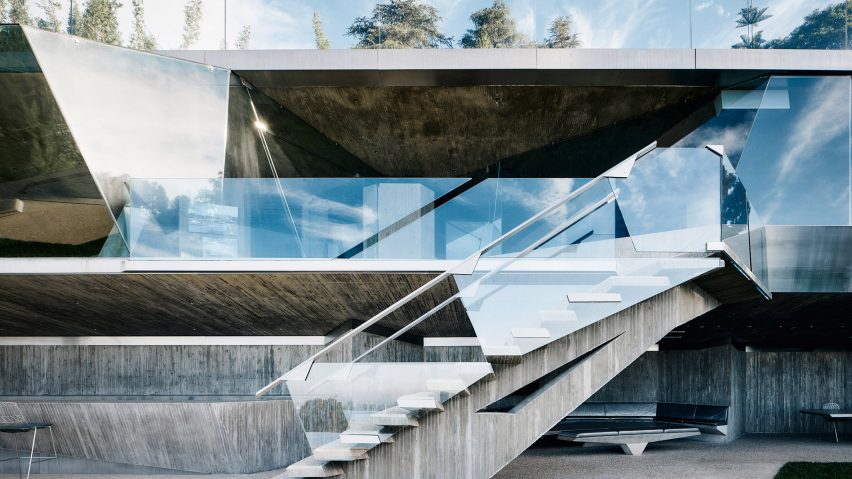
Conner + Perry Architects completes terrace addition at Lautner house in LA
Architecture studio Conner + Perry Architects has made additions to the area surrounding the Sheats-Goldstein Residence in Los Angeles, which American architect John Lautner designed in the 1960s.
Conner + Perry Architects completed work on the lower terrace of the steep site, with the original Lautner house at the top of the site. The lower section is called the Goldstein Entertainment Complex, with amenities fanning down the hillside designed in a style that remains deferential to the iconic house.
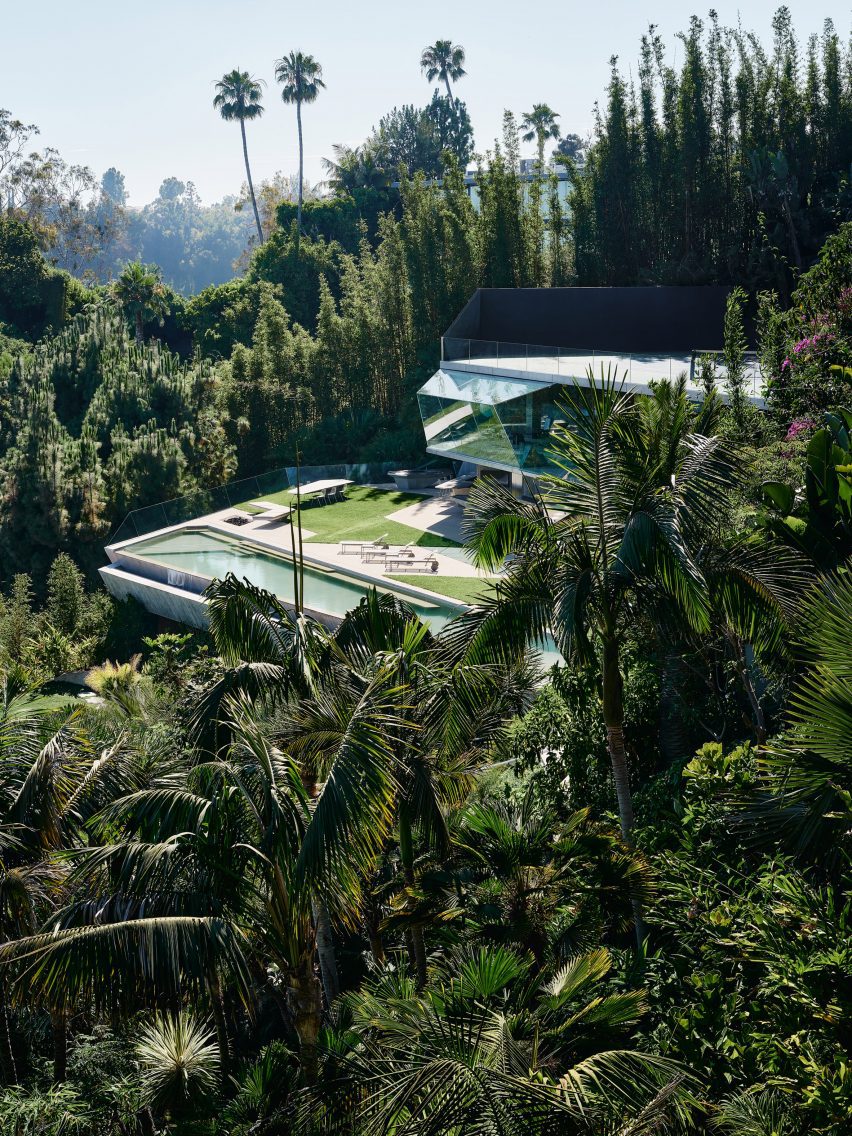
Since the original home on the property was completed in 1963 by Lautner, several rounds of renovations and additions have been made to the property.
These were first made by Lautner following Jim Goldstein's acquisition of the property in 1972 until Lautner's death in 1994, followed by Lautner's apprentice Duncan Nicholson, and then by Kristopher Conner and James Perry of Conner + Perry Architects, who worked under Nicholson.
The expansion of the property under Nicholson included a nightclub, pool, offices, library, tennis courts and a James Turrell Skyspace.
Conner + Perry Architects continued this work after Nicholson's passing in 2015 and designed further "entertainment" facilities on the lower terrace of the site.
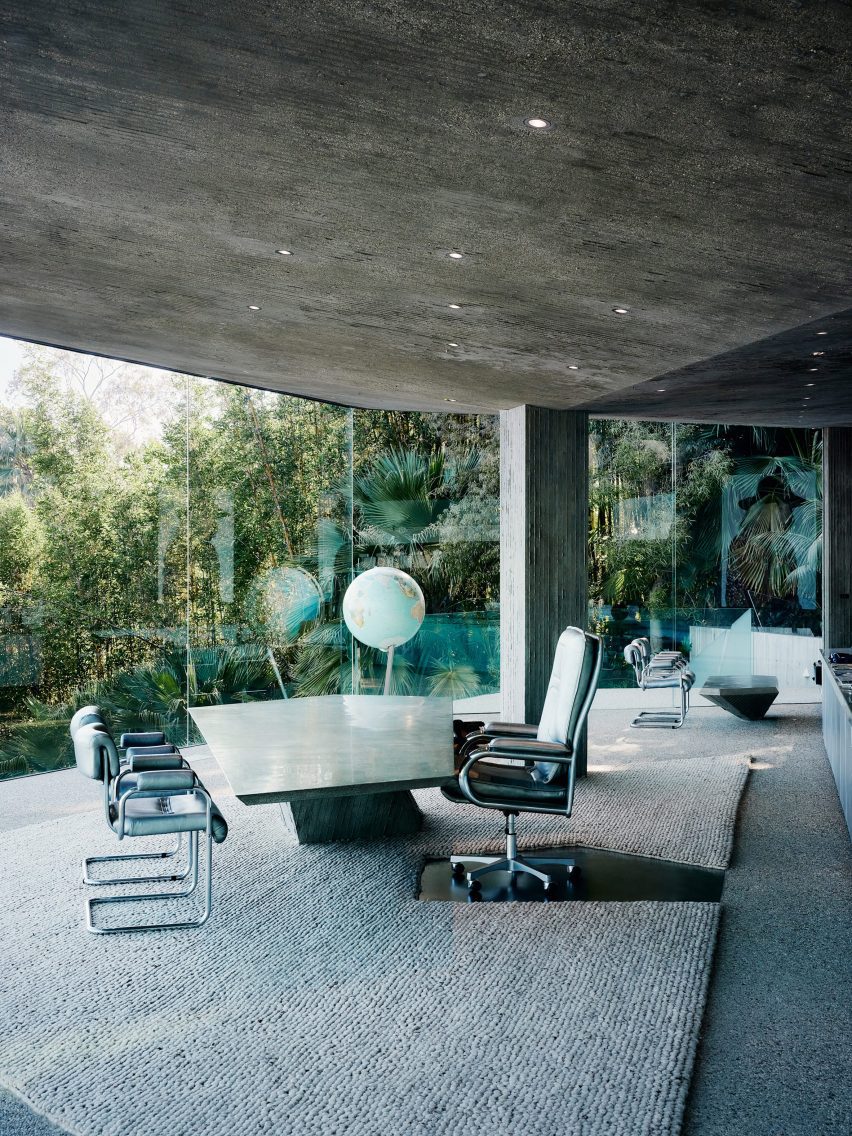
Known broadly as the Goldstein Entertainment Complex, the additions completed under Conner + Perry Architects include a spa, lounge and reception area, under the direction of Jim Goldstein, who has owned the property since 1972.
"There has always been a keen sense of respect for the architectural legacy of the original Lautner-designed home and any development has always been in deference to its preservation," Kristopher Conner and James Perry told Dezeen.
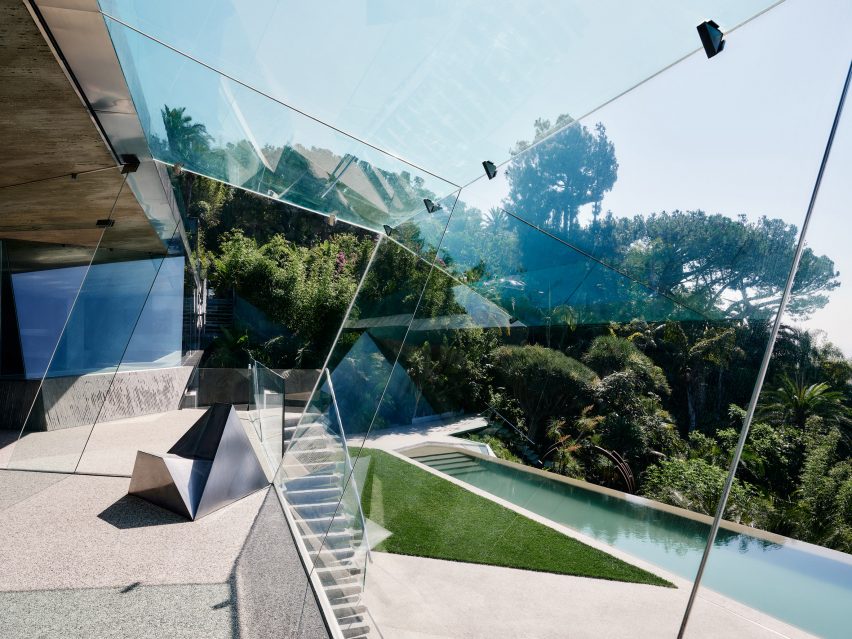
"Besides the logistical and planning hurdles of working on such a dramatic hillside lot and navigating the unrelenting schedule of various events and fashion or movie shoots, it is always at the forefront of our minds that the site is what we consider an architectural holy ground," the architects added.
"Lautner is one of the masters of American organic architecture; we strive to preserve the original home to its fullest extent so that others can continue to enjoy this masterpiece."
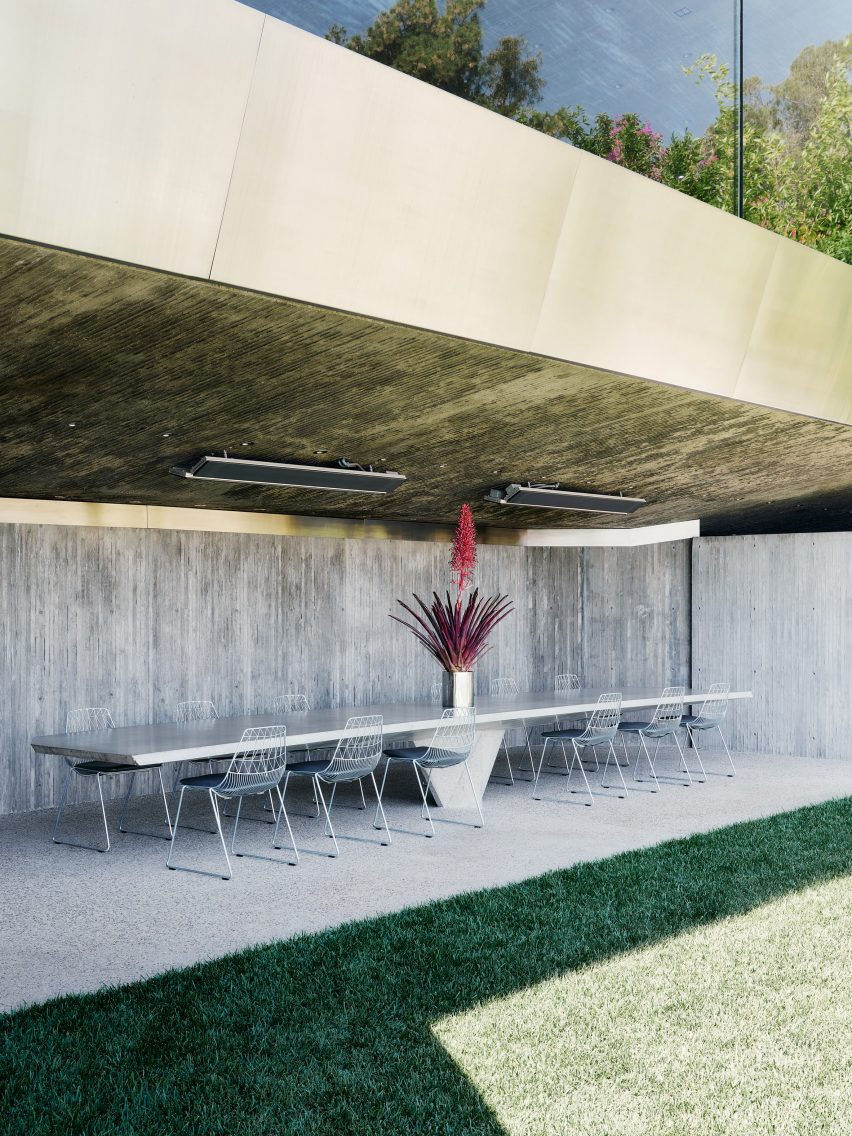
Conner + Perry Architects' intervention includes the completion of a long concrete building with rough facades that fits into the hillside and is crested by long panes of glass.
The structure has a tennis court on top and steps down to a concrete patio that surrounds the lounge and library areas, and to a cantilevered pool deck with concrete staircases that lead into the lush surroundings.
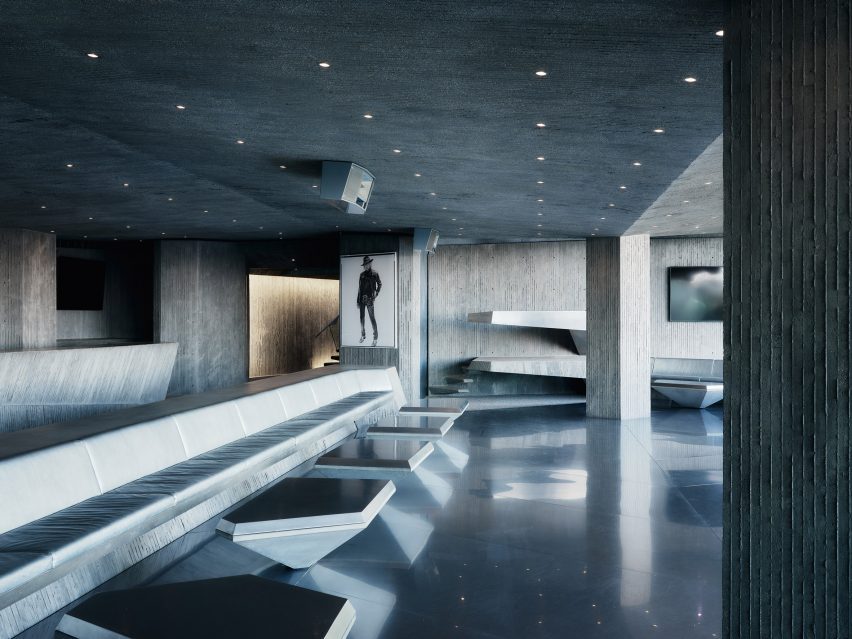
A staircase from the motor court of the residence leads down into the bar and lounge area. From here, long rooms branch out, including the library and offices.
Concrete, glass, stainless steel and details as well as custom built-in seating were included to reference Lautner's material palette.
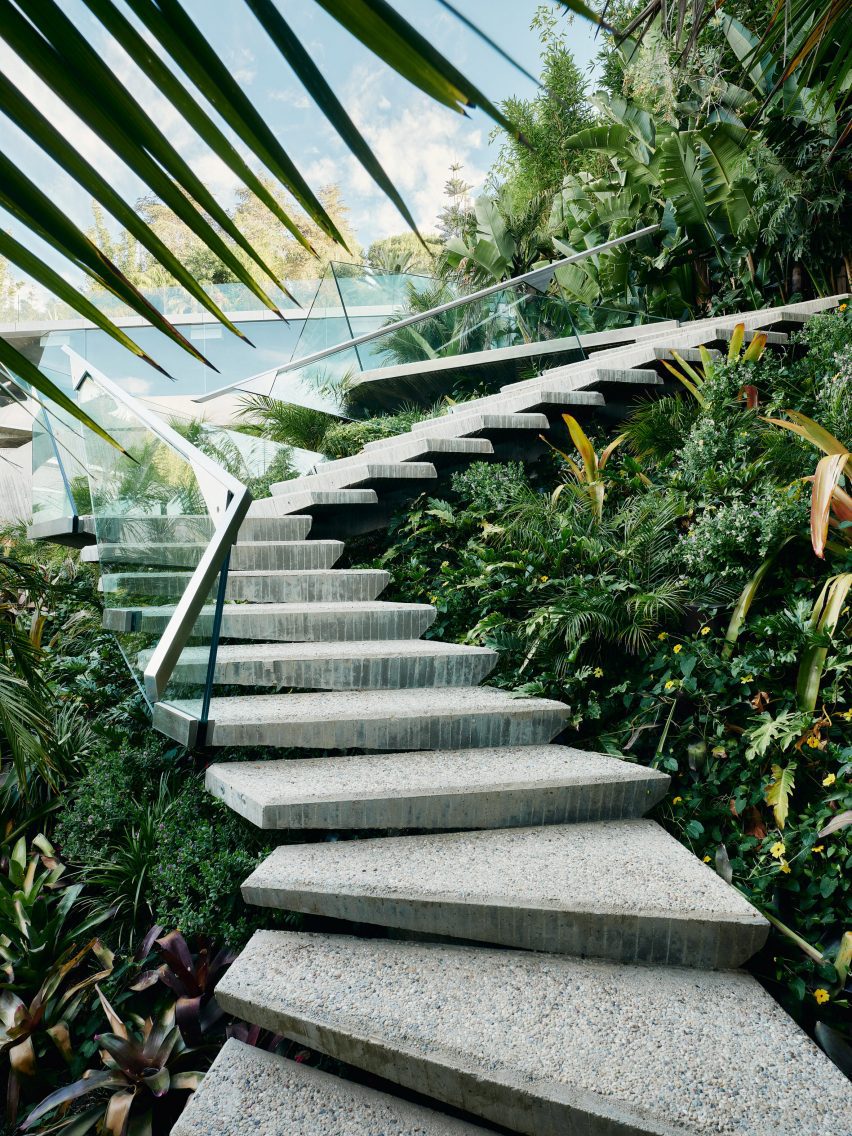
Significant details include a large laminated glass extrusion with stainless steel details that juts out from the primary patio.
The studio said that its main purview was the expansion of these entertainment facilities into the landscape, and while the structure does not connect directly with the original home, it was designed to connect "in spirit".
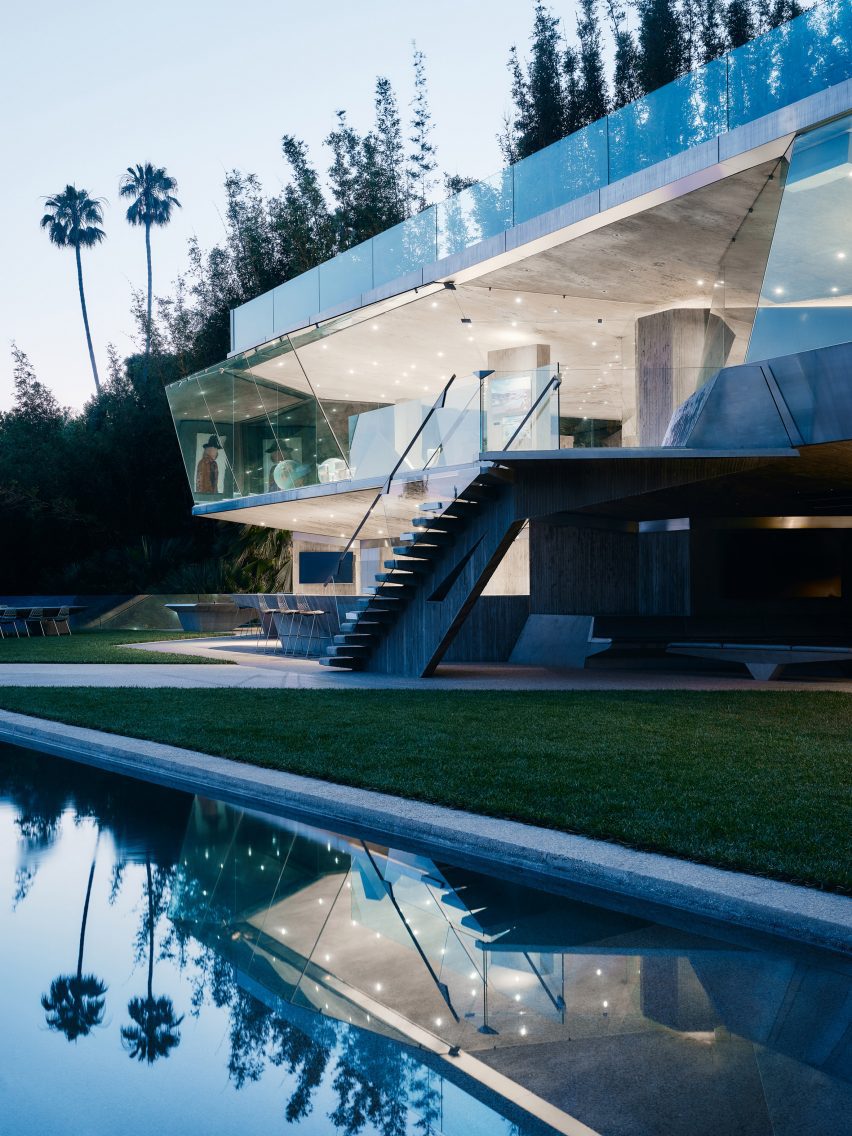
"The expansion does not physically connect to the original Lautner home except through the landscape, but it certainly does connect in spirit. It is an expression of Goldstein's desires and of the site," said Conner and Perry.
"The design is always in conversation with the original home. [It is] an evolution of the language that Lautner established, but never a copy," they added.
"The tenets of organic philosophy dictate that space needs to be a unique reflection of its intended use, so the geometry and materials that are held in common with the house adapt to a new function and a slightly differentiated relationship to the landscape."
According to the studio, Goldstein travels constantly and is constantly coming up with "new ideas and inspiration" for the site as it expands.
Restoration work and updates are continually carried out throughout the property.
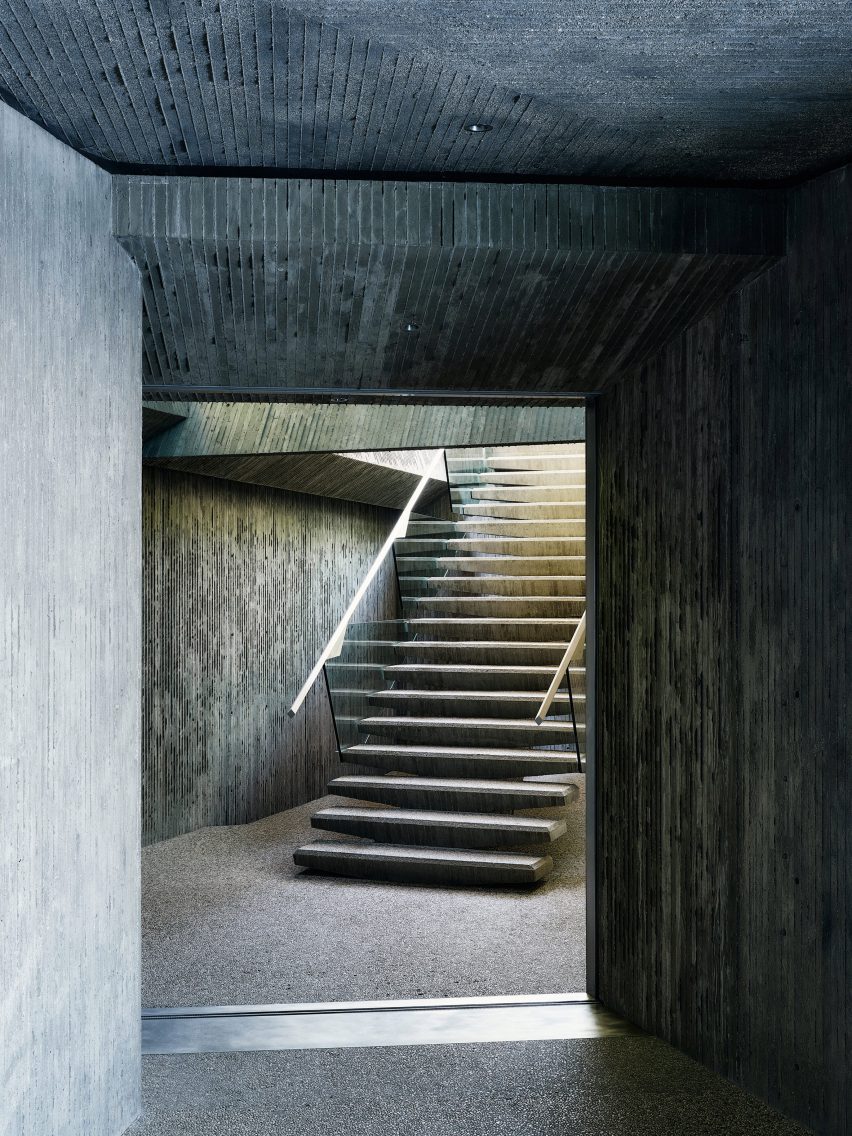
In 2016, Goldstein announced that the property would be entrusted to the Los Angeles County Museum of Art (LACMA) in order to preserve the legacy of the home.
Future additions to the Sheats–Goldstein Residence include a theatre and guest house.
Other updates and extensions to famous mid-century architecture in Los Angeles include Wood + Dangaran's renovation of a home by architect Craig Ellwood and Ome Dezin's restoration of an A Quincy Jones house in Brentwood.
The photography is by Joe Fletcher.